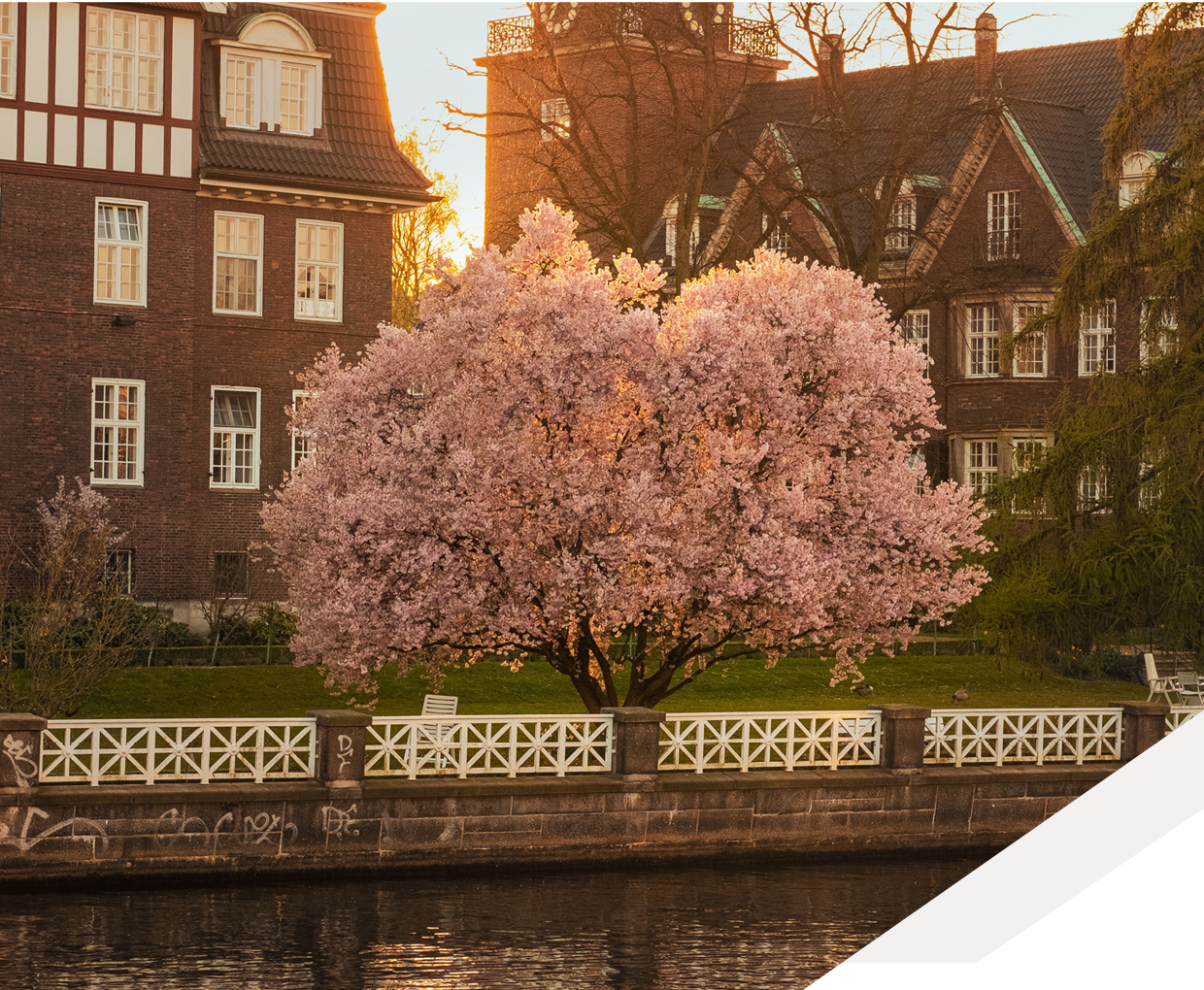Quarterly Letter - Building from the bottom up
Foreword
The way we write our Quarterly Letters often reflects how we invest at Rothschild & Co – from the bottom up.
Traditionally, each Quarterly Letter focuses on a single element of what we do or how we think. We then perform a deep dive into the fundamentals of that topic, before demonstrating how that particular jigsaw piece fits into the wider investment puzzle. Moving from the specific to the general is a classic bottom-up approach.
It is perhaps ironic, then, that for this edition – in which we want to explore our bottom-up investment philosophy in more detail – we are going against the grain and taking a top-down view.
That’s because we believe it is crucial to ensure our clients have a broader understanding of why we do what we do before we delve into the specifics of our bottom-up approach and portfolio mechanics.
In a previous Quarterly Letter where we focused on our investment approach, we explained why we focus on wealth preservation, what we’re trying to achieve and what can be expected from us.
Much of what we said in 2017, when we first covered this topic, is as true today as it was then.
But a key aspect of our approach that we want to talk about more is the people behind the process: our staff, the management teams and employees of the companies and funds that we invest in, and you, our clients.
These relationships are the foundation upon which our bottom-up approach is built. And like your wealth, we seek to preserve these relationships over the long term.
Helen Watson
CEO, Rothschild & Co Wealth Management UK
Building from the bottom up
Imagine for a moment that two horseracing experts are trying to pick a winner for the Grand National. They’re both knowledgeable, well-informed followers of the sport, but they have very different strategies.
The first, Simon, checks the weather forecast on race day. It’s predicted to drizzle. Rain affects a racetrack’s condition, known as the ‘going’, with moisture soaking into the ground to produce a softer, more churnable surface.
A heavy ‘going’ is a test of endurance, and horses with the best stamina often fare better. Front-runners also have an advantage; they can get out ahead, trample the ground and kick mud up into other horses’ faces.
Armed with this knowledge, Simon selects a horse he believes will triumph in these specific conditions.
In investing, we call this a ‘top-down’ approach. A top-down investor forms a high-level view, assessing the prevailing macroeconomic and sociopolitical ‘weather’ to predict how it may affect market conditions. They then select investments they believe are most likely to perform well within that particular environment.
Let’s return to our other horseracing expert, Emily. She’s less concerned with the current weather or the condition of the track. Her primary focus is on the horses themselves.
Which horse has the best Thoroughbred pedigree? Are the trainers and jockeys respected within the industry? What desirable traits (speed, strength, stamina, temperament) does a horse have compared to its rivals? And does it have a history of performing well under pressure?
Building a portfolio using this type of approach is known as ‘bottom-up’ investing. The aim is to select high-quality individual securities and funds that have resilient business models and practices (Thoroughbreds), strong management (trainers and jockeys) and sustainable competitive advantages (desirable traits).
At Rothschild & Co Wealth Management UK, we favour a bottom-up investment approach. We believe in finding the Red Rums and Galileos of the investment world – the outstanding performers that deliver results year in, year out, whatever the market conditions.
What we're trying to achieve
Our investment objective is to preserve and grow the real value of our clients’ wealth.
Why is preservation first so important? Most of our clients are successful families and individuals who have worked hard to build their wealth. They are usually looking to us to safeguard that wealth from eroding forces, rather than create a second fortune.
It takes a great deal of boldness and caution to make a great fortune; and when you’ve got it, it requires ten times as much wit to keep it.”
However, every client’s needs are unique, which is why our client advisers spend a lot of time getting to know you better. We want to understand your priorities and motivations, as well as the role that wealth plays in your life and the goals you wish to achieve.
Then, as responsible custodians, our investment team must accomplish several related goals: outpace inflation, pursue prudent growth, and avoid large losses, all while focusing on the long term.
A top-down approach can be effective at achieving the first two but faces a number of hurdles – to use another equestrian pun – when trying to avoid large losses over time.
Top-down investors often seek to anticipate macroeconomic changes, evaluate their downstream effects, and buy and sell assets at just the right moment.
But market weather is often fickle; a light shower can quickly turn into a storm, and lightning has been known to strike even on clear days. Predicting which way the wind will blow next is inherently difficult.
That’s not to say the big economic picture isn’t important. Its impact is continually reviewed by our Global Investment Strategist, Kevin Gardiner, and these insights can influence some of our portfolio decision making.
Nevertheless, we try to recognise the limits of our knowledge about the future and believe too much confidence in forecasting is a recipe for financial pain.
For example, if you experience an investment loss of 50%, you then have to double your money just to get back to where you started. If you lose 80% of your capital, the equivalent gain required is 400%.
On the other hand, an investment that grows at an average of 7% annually will double in value over a decade and nearly quadruple within 20 years. Over time, regularly reinvesting the gains has such a powerful cumulative impact that this ‘compounding’ has been called the eighth wonder of the world.
In short, successful investing over the long term is more about avoiding disasters than delivering great results each and every year. Consistency is key.
Even three-time Grand National winner Red Rum didn’t win every race, but he always crossed the finish line. Not once did he fall throughout his 100-race career.
Our people
No success occurs in isolation. One of the major reasons for Red Rum’s success was his trainer, Ginger McCain, who led the horse to three Grand National victories after spotting him at the Scottish Grand National in 1972. Alongside seeing this potential, his skill and dedicated commitment to training was key to the joint success of horse and trainer, emphasising the importance of people and relationships in any venture.
Rothschild & Co is a business built on strong relationships – with our clients, with the companies and funds we invest in, and with each other. So, to better understand our investment approach, it’s essential to talk about the people behind the process. Throughout the company, we strive to attract and retain talented individuals from a diverse range of backgrounds, cultures and experiences.
We’ve already briefly mentioned our client team and our investment team. While there is a clear delineation between the investment and client teams, enabling them to focus on their respective areas and key strengths, they still work together closely – both figuratively and literally. Both teams work in close proximity to one another on the same floor, meaning they can (and do) frequently walk to each other’s desks and talk face to face.
This collaborative environment fosters an ongoing conversation, and exchange of ideas, between client advisers and the investment team.
Our advisers pass on information and questions from clients to our portfolio managers, who are then able to provide insights and answers. It is a cyclical process that helps to fuel new ideas, open up new research areas and highlight any areas of concern our clients may have.
Portfolio construction
We often speak about how our portfolios are split into two distinct parts. One is focused on opportunities for creating wealth, which we call ‘return’ assets. As the name suggests, we expect them to grow in value and deliver good returns over time.
The other side of the portfolio is focused on risks. Here, we hold diversifying assets – we believe these will help preserve capital and offer some protection. Collectively, these assets should help make the investment journey smoother, cushioning the impact of the inevitable bumps on the road and allowing us to take advantage of opportunities as they arise.
Everything we invest in is selected on its own merits. That means we begin by finding individual securities and funds we might want to own, conducting deep research into them ourselves, then deciding if we should buy them, and at what price.
In short, successful investing over the long term is more about avoiding disasters than delivering great results each and every year. Consistency is key."
Within a portfolio, our aim is to keep the number of investments small and stable, and we’re comfortable taking large positions in an investment where we have a high level of conviction about its long-term prospects.
Taking a long-term view isn’t just embedded into our investment approach, it’s a fundamental part of our culture and values at Rothschild & Co. After all, it is not just wealth we are looking to preserve for future generations, but also the environment and society they will inherit.
That is why, as long-term investors, we see sustainability as a fundamental investment issue. Ultimately, environmental, social and governance (ESG) factors have an intrinsic economic impact that must be acknowledged and addressed by companies.
We therefore explicitly integrate sustainability analysis into our investment process, rather than treating it as an add-on. Put simply, ESG flows through everything we do.
We have no mandatory allocation to any asset class or investment type and we’re location agnostic. Rather than be limited to one market or region, our analysts and portfolio managers are passionate about finding the best investments, wherever they may be.
They speak to their networks, scour trade journals, track the latest company developments and keep up to date with quarterly and annual performance reports, of course. But we believe good investment research goes beyond the data.
We want to get to know the people at all the companies and funds we work with, and we do that by getting boots on the ground, visiting businesses and managers across the world and building strong personal relationships.
Our researchers talk extensively to current and former employees, as well as suppliers, distributors, competitors and industry experts to fully understand a company and its performance.
This not only provides the crucial context and deep insights that underpin our investment decisions, but also helps to strengthen the key partnerships that we hope to maintain over the long term.
Growing your wealth: the return assets
Our return assets are mostly shares in individual companies or equity-related funds. They may also include corporate bonds, real estate and other assets.
What these investments have in common is that their returns – and their pattern of risks – all tend to be linked to the stock market. This means, when stock markets fall, we anticipate that the prices of our return assets will also decline.
Companies
As previously mentioned, these are some of the world’s most successful businesses. They have proven sustainable competitive advantages that have endured through inflation, deflation, depressions, world wars, energy shocks and revolutions in transport, technology and communications.
These firms usually have a good record of allocating capital and have solid balance sheets, little debt, lots of free cashflow, and high returns on invested capital. Over time, these companies are well placed to raise their prices to outpace inflation and to compound their reinvested earnings at an attractive rate.
Once we have invested in a great business, we don’t try to be clever by trading in and out of our position, although we may occasionally take advantage of pricing discrepancies.
Third-party funds
Here, we are choosing to partner with fund managers who have skills and expertise that complement our own.
We do not have a monopoly on talent at Rothschild & Co, and we see skilled third-party fund managers not as suppliers, but as an extension of our own team. They typically share a similar investment philosophy to us, although we are not looking for them to simply replicate our own thinking.
As specialists in their niche, these managers offer unique insights into markets where we believe there is untapped potential, but perhaps don’t have a strong local presence ourselves. They act as our eyes and ears (and brains) on the ground.
Deciding to partner
When we invest with a manager, we see it as a partnership. This means we go into the relationship backing the manager for the long haul. We do not tinker with our investment or attempt to micromanage what they do.
We know that if they are to deliver exceptional returns, they may have to go against the flow and invest with conviction – traits that we share – and this inevitably means there may be some stretches when their performance is weak.
That said, we are never wedded to a manager or fund, regardless of their reputation. Our monitoring is active and our regular meetings with them give us the chance to challenge them if we see fit. We are always on the lookout for red flags, and we will withdraw our clients’ capital if we become convinced that better opportunities lie elsewhere.
|
Enabling assets Some of our clients want to know that their money is being invested in companies that are actively supporting the transition to net-zero carbon emissions. We therefore add another element to our investment objective for certain portfolios, which is to specifically target companies, securities and funds that support the transition to a low-carbon economy. At the same time, fighting climate change by decarbonising our world presents an outstanding investment opportunity. Billions of dollars must be invested in the energy transition, and decarbonising agriculture, industry and transportation will require further investment. We believe in this opportunity and define the assets that contribute to these aims as ‘enablers’. There are four main areas where we expect these enablers to make a meaningful impact:
|
Protecting your wealth: the diversifying assets
Japan and California share a dubious honour. They are both located within the Ring of Fire, a vast horseshoe-shaped area around the Pacific Ocean rim that experiences frequent earthquake and volcanic activity.
In Japan, there are roughly 1,500 earthquakes every year. Meanwhile, California suffers a quake every three minutes, although most of them, thankfully, are too small for the Golden State’s residents to notice.1
Despite facing similar challenges, structural engineers in the US and Japan take remarkably different approaches to earthquake-proofing their buildings. And these differences give us insight into how they (and some investors) view risk.
American engineers largely operate on the assumption that buildings have a limited shelf life. A structure may only be standing for a few decades or so before being torn down and replaced.2
The probability of a catastrophic earthquake occurring during that time is slim, so protective standards are lower, helping to reduce costs and maximise returns. Essentially, they’re trying to time the market.
Developers know that if strong earthquakes happen, many buildings will be badly damaged, possibly irreparably. It’s a high-risk strategy that would likely lead to widespread capital losses in the event of a major quake.
From a portfolio perspective, we consider the permanent loss of capital a ‘deep risk’.
This term was popularised by financial theorist William Bernstein to differentiate between high-magnitude, long-duration losses and ‘shallow risks’ – the temporary losses that investments can recover from relatively quickly after market turbulence.3
Shallow risks are uncomfortable, yes, and they may last months or even a year or two. But they can be managed with the right approach. Deep risk must be avoided wherever possible.
How can we get the right balance? Japanese engineers provide some inspiration.
Built-in protection
Japanese structures, no matter how small or temporary, are designed with robust earthquake protection measures in place. They typically use base isolation techniques, which greatly reduce the amount a building moves during a quake by absorbing the shocks.
In other words, Japanese buildings – like our portfolios – are designed with a preservation-first approach. They’re built from the bottom up, using strong materials and with comprehensive protection.
The goal is to build things that last centuries, not just a few generations. It’s no coincidence that many of the world’s oldest businesses, some of which were founded over 1,000 years ago, are also based in Japan – they take a long-term view.
So, what protective measures do we have in our portfolios to offset the risks of minor market quakes and, hopefully, avoid the major ones altogether?
This is where our diversifying assets come in. Although each diversifying asset performs a slightly different role, our general expectation is that they should perform well during a sustained downturn in markets, and at times when markets are volatile.
If they perform as we expect, these diversifiers will help to offset falls in the return assets, reducing both the shallow and the deep risk of the overall portfolio.
The diversifiers
Our diversifiers fall into four broad categories. Let’s start with portfolio protection.
Investments here involve a type of financial market contract known as an option, which are similar to insurance policies. In essence, we pay a premium up front, giving us protection for a set period of time against a large drop in equity markets.
If equity markets remain buoyant, we have paid our premium without anything in return. However, should deep market tremors occur, we will usually receive back many times the amount we paid for the initial premium.
Our alternative strategies are another diversifier. These are funds run by specialist third-party managers who invest in areas that aim to provide the portfolio with a source of return that isn’t solely reliant on rising equity markets.
Sometimes, these strategies will perform well in periods when equity markets are falling, although this is not always the case. They offer broad diversification, rather than perfect protection.
We also hold cash and bonds. When market panic sets in, it can be difficult to raise cash quickly, so having it on hand is very valuable. Cash gives us firepower, allowing us to buy good assets at depressed prices. We have been concerned about inflation for some time and have been focusing our bond investments on securities where returns are linked to levels of inflation across the world.
Lastly, if we find a bond where the potential returns look compelling, we will own it as a return asset. If a bond helps protect us against a particular risk, we will own it as a diversifier. When bonds do neither of those things, we won’t own them at all.
Conclusion
Building portfolios from the bottom up that focus on preservation first is what we do best.
But prudence isn’t the same as tentativeness. We invest with conviction in high-quality businesses and our decisions are underpinned by in-depth research, the skills and expertise of our staff and the power of our networks and relationships.
By combining return and diversifying assets in the way that we do, we believe our portfolios should outpace inflation, avoid large losses, and deliver good growth over the long term.
Crucially, we do not forget our obligation to deliver on the last objective: good growth.
At Rothschild & Co, we like to manage expectations. But it’s also important to note that our investment approach is designed to back long-term business winners, not the also-rans. And if you consistently back the best, healthy returns should follow.
Citations
[1] www.nationalgeographic.com/science/article/every-three-minutes-one-earthquake-california
[2] www.nytimes.com/interactive/2019/06/03/us/earthquake-preparedness-usa-japan.html
[3] Deep Risk: How History Informs Portfolio Design, William J. Bernstein, 2013




